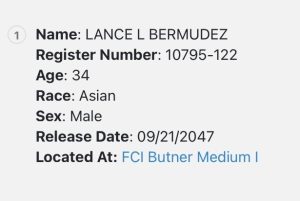It’s Sunday. The day started with rain. I’m on low speed today as my brain feels like I’m hungover, but it’s really just the vestiges of the cold I picked up while in Portland. I’m trying to ween myself off the decongestants today. We’ll see.
Meanwhile, here’s some fine reading for a gray Sunday: “Sandwich Guy, Thrower of Hoagie–Or Hero?,” by Molly Roberts, a former member of the Washington Post editorial board who is now senior editor at Lawfare.
Roberts reports on this week’s trial in federal court of Sean Charles Dunn, 37, who was charged with a federal crime for tossing a loaded salami sandwich at a Customs and Border Protection officer during a protest against federal officers patrolling the streets of the nation’s capitol, striking him directly on his bullet-proof vest.
It’s seems surreal that a charge like this would be filed, and end up with a full-fledged trial during which, Roberts reports, jurors had trouble controlling their laughter.
Dunn was acquitted, but not before the trial put the idiocracy to the test.
Here’s a teaser, but you really should read her entire story.
The question, as it turns out, isn’t really, “Did he throw a sandwich or did he not throw a sandwich?” (That’s hardly in dispute; even the defense emphasized in its opening statement, “He did it. He threw the sandwich.” The government opted for, “No matter who you are, you can’t just go around throwing stuff at people if you’re mad.”) The question is whether the throwing of the sandwich was, as the defense put it, “a punctuation,” “an exclamation mark at the end of a verbal outburst,” “a harmless gesture that did not and could not cause…injury” or whether it was a violent act, and a federal crime.
Throughout the trial, the prosecution and defense characterize the sandwich throw as either ferocious (the prosecution) or frivolous (the defense). They employ language to match, staging a high-tension courtroom drama: “He takes the sandwich in his hand, he cocks it back,” a lawyer for the government describes, as if the grinder were a gun. Similarly, in a court filing, the prosecution says the sandwich was thrown at “point-blank range.” Later, the lawyer inquires about the “impact” felt by the alleged victim, Customs and Border Protection Officer Gregory Lairmore.
“I could feel it through my ballistic vest,” the agent testifies. “The sandwich…exploded all over my uniform. I could smell the onions and the mustard.” As Joseph Conrad’s Kurtz might have testified, “The horror! The horror!”
The defense, in contrast, treats l’affaire de sandwich more as farce. An attorney plays for the jury the final portion of an Instagram video depicting the incident. The now notorious late-night snack lies discarded on the ground, accompanied by a caption, “This sandwich is going up in history.” She asks the victim to identify the sandwich; he says he can’t make a positive verification, because he didn’t go back to collect it. She points out that the paper wrapping is still largely on, the contents essentially intact.
“You don’t see there’s mustard on it?” No. “You can’t tell there’s ketchup on it?” No. “You can’t tell there’s mayonnaise on it?” No. Lettuce? Tomato? “In fact, the sandwich hasn’t exploded at all?”
Also see:
“How a thrown sub made ‘Sandwich Guy’ a resistance icon in Trump’s D.C.,” Washington Post, August 21, 2025.
“Prosecutors charge D.C. sandwich thrower with misdemeanor,” Washington Post, August 28, 2025.
“‘I could smell the onions and mustard’ | CBP agent testifies at ‘sandwich guy’ assault trial,” WUSA9 News [Includes video of the sandwich throw].
“DC ‘sandwich guy’ found not guilty of misdemeanor assault,” The Hill, November 7, 2025.
“Man who threw sandwich at federal agent in D.C. found not guilty of misdemeanor after trial,” CBS News, November 6, 2025.

